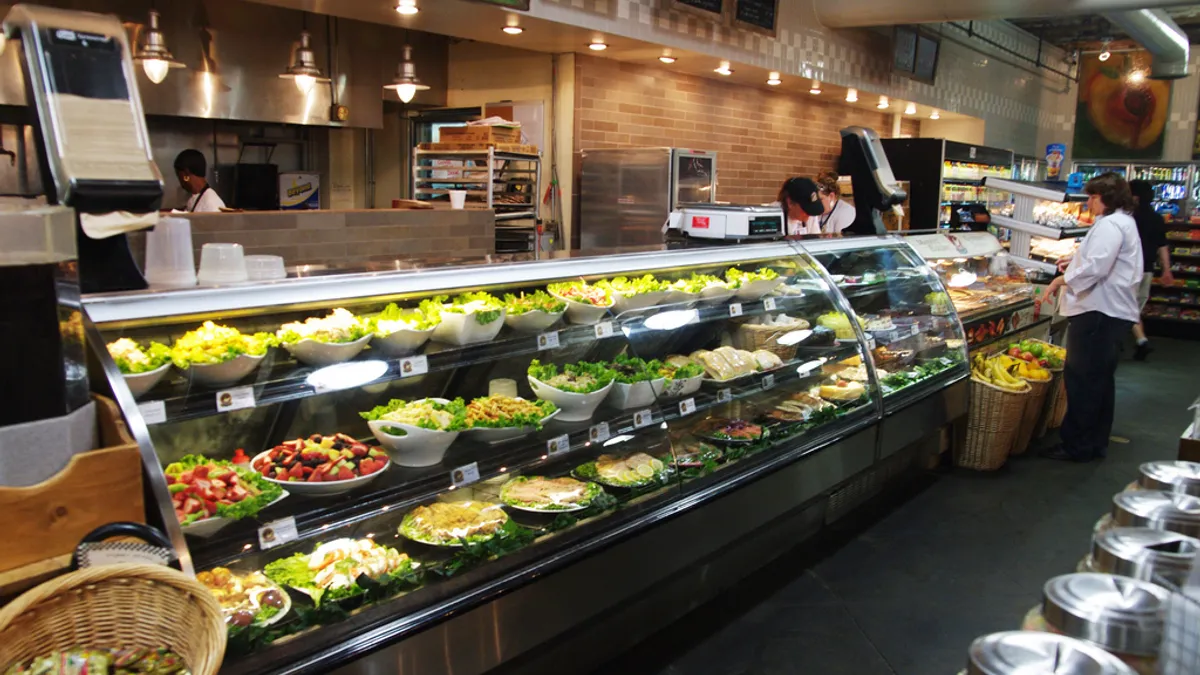Editor's note: Sean McBride, Founder of DSM Strategic Communications, LLC, is former executive vice president of the Grocery Manufacturers Association and former director of communications at the American Beverage Association.
What do Chipotle, Cava Grill and MOD Pizza have in common? They have found a way to tap into modern consumers’ desire for meal customization.
It’s no wonder restaurants with a customization format are driving growth in the casual dining sector. Food consumers – once a reasonably predictable and monolithic demographic – are more demanding than they have ever been. A rising percentage of them want foods that match their nutrition, dietary, health, religious, cultural and ethical needs and perspectives.
Many seek to cut carbs and added sugar. Others need to (or prefer to) follow a gluten-free diet. Some need or want to reduce sodium or saturated fat. Increasing numbers of people exclusively eat fresh, local and organic food. Everyone wants foods and dishes bursting with the flavors and textures that appeal to his or her own individual palate.
The packaged food sector was quick to recognize the changing needs of consumers. Over the past 15 years, food companies introduced more than 30,000 new and reformulated products with reduced calories and serving sizes, less sugar, fat and sodium, and more whole grains and essential vitamins and nutrients.
Once restaurants realized consumers were scrutinizing the nutritional profile of their meals, drastic change resulted with healthier menus and “have it your way” choices.
The massive reformulation effort underway by packaged food companies is a great start. Providing consumers with a plethora of products and product extensions with different taste and nutritional profiles has helped maintain consumer trust – especially for the most recognizable legacy brands.
But what does the next generation of at-home meal customization look like? How do food retailers and manufacturers fully capitalize on consumer demands for nutritious, healthy and easy-to-prepare home meals?
Stores that modernize their formats to erase the traditional lines between the center store — where most packaged food is sold — and the perimeter of the store — where most prepared and fresh foods are sold — will take a giant step in the right direction.
One example of a retail brand that successfully blends packaged food, fresh food, culinary experiences and casual dining is Wegmans. Their format empowers customers to taste, sample and learn how to build meals using a blend of fresh, packaged and prepared foods, then purchase the foods and ingredients they need to bring that meal to life.
What about consumers that are in a big hurry? Retailers can provide in-depth culinary experiences for consumers who want it, while also providing healthy, great-tasting and affordable grab-and-go options for other shoppers.
Think about the success of well-known meal delivery services that provide the ingredients and directions someone needs to cook a nutritious, delicious meal at home, and ways innovative food manufacturers and retailers can capitalize on the trend. Moving beyond the popular rotisserie chicken offerings, what if manufacturers and retailers combined to create prepared meals that can be purchased at their local grocery store at a moment’s notice?
Imagine stopping at the store on the way home, hustling to the prepared meal section and choosing a boxed meal that includes all the ingredients needed to prepare a delicious meal of chicken cacciatore with a fresh garden or Caesar salad on the side in less than 30 minutes.
Of course, there would have to be limited menu choices in the name of efficiency, but that model meets the needs of consumers seeking delicious, healthy meal options that are easy to prepare without a subscription service and with the flexibility to grab-and-go whenever they want.
Clearly, the center of the grocery store will not go away anytime soon. But retailers and manufacturers must continue to blur the lines and experiment with ingredient kits because more and more consumers are not going “grocery shopping” anymore, preferring instead to go “meal shopping.”
When it comes to customization, the packaged food sector should study the success of restaurants like Cava Gill, grocers like Wegmans and ingredient delivery services like Blue Apron, Boxed.com and Zaycon, and develop a new and exciting way for grocery stores to provide consumers with the customization, simplicity and flexibility they seek.
















